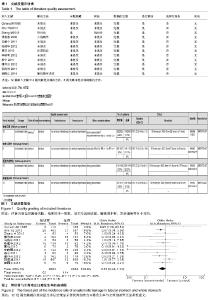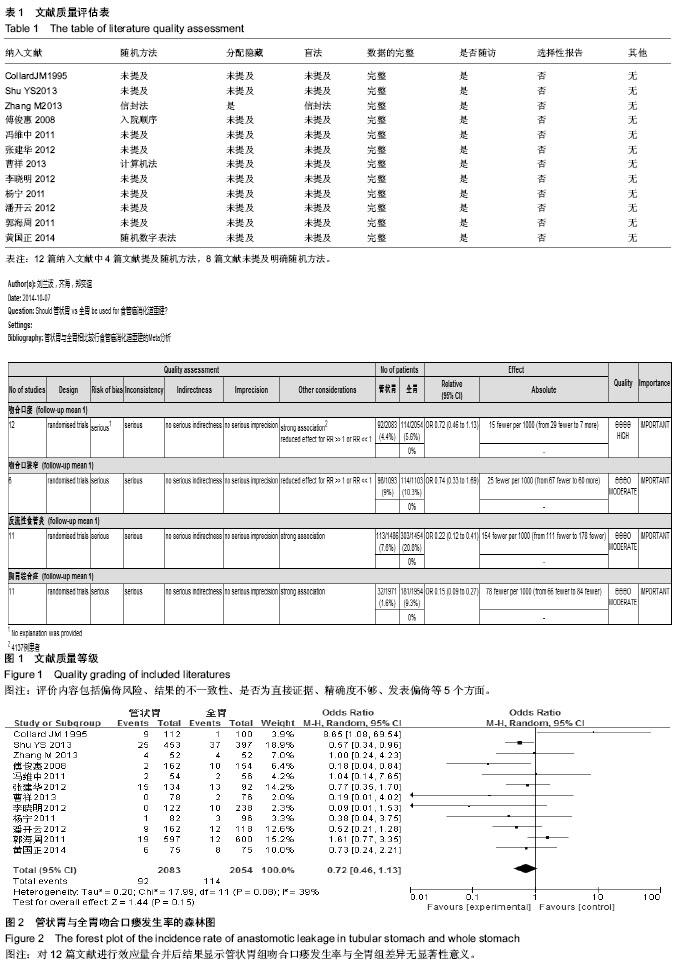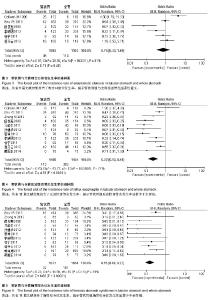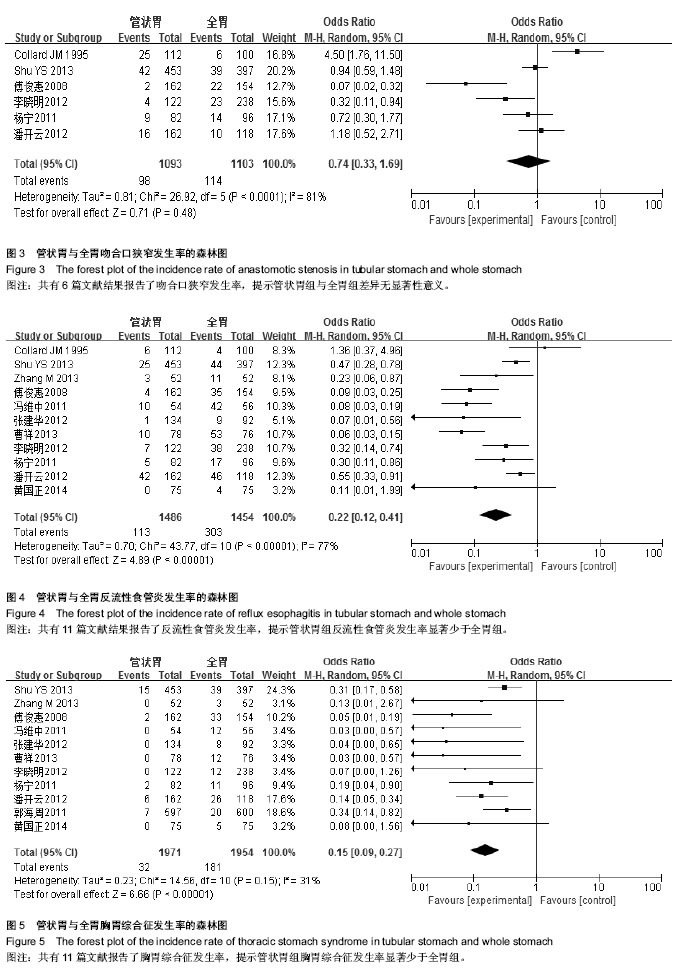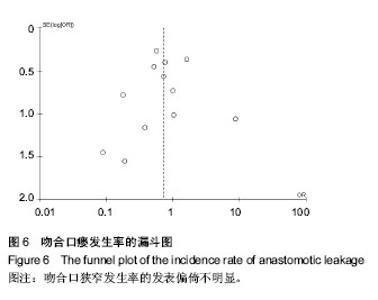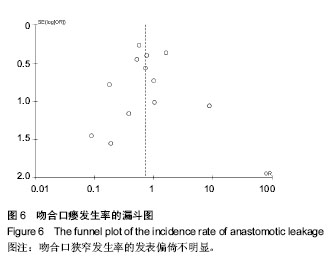| [1] 车嘉铭,项捷,陈凯,等.管状胃在食管、贲门癌手术中的临床应用[J].中国胸心血管外科临床杂志,2010,17(2):96-98.
[2] Buunnen M, Rooijens PP, Smaal HJ, et al. Vascular anatomy of the stomach related to gastric tube construction. Dis Esophagus.2008;21(3):272-274.
[3] 吴庆琛,管状胃与全胃代食管的食管癌切除术后患者生活质量比较[J].实用医院临床杂志,2011,8(5):3-7.
[4] Collard JM, Tinton N, Malaise J, et al. Esophageal replacement: gastric tube or whole stomach?. Ann Thorac Surg.1995;60(2):261-266.
[5] Shu YS,Sun C,Shi WP,et al. Tubular stomach or whole stomach for esophagectomy through cervico-thoraco- abdominal approach: a comparative clinical study on anastomotic leakage. Ir J Med Sci.2013; 182(3): 477-480.
[6] Zhang M,Wu QC,Li Q, et al. Comparison of the health-related quality of life in patients with narrow gastric tune and whole stomach reconstruction after oncologic esophagectomy: a prospective randomized study. Scand J Surg.2013;102(2): 77-82.
[7] 傅俊惠,黄建豪,吴智勇,等,切除胃小弯的管状胃加颈吻合治疗胸段食管癌前瞻性研究[J].中国基层医药,2008,15(1):18-19.
[8] 冯维中,李泽亚.管状胃重建在食管癌手术中应用的临床研究[J].重庆医学,2011,40(12):1189-1190.
[9] 张建华,黄壮士,付东宏.管状胃在食管癌切除消化道重建术中的应用[J].重庆医学,2012,41(23):2422-2423.
[10] 曹祥,徐绍敢,邓波荣,等,管状胃在食管癌切除消化道重建中的应用[J].临床外科杂志,2013,21(7):530-531.
[11] 李晓明,李学兆,石锋.管胃成形术在食管癌手术中的临床研究[J].中国当代医药,2012,19(20):43-44.
[12] 杨宁,冯永健,薛会岗,等,管状胃重建食管对食管癌术后并发症的预防[J].中华临床医师杂志,2011,05(9):2768-2769.
[13] 潘开云,张文山,黄荣智,等,食管癌切除管状胃与全胃重建食管的对比研究[J].中国肿瘤外科杂志,2012,4(4):236-237.
[14] 郭海周,王建军,周福有,等,管状胃对食管癌切除术后并发症的改善作用[J].中华胃肠外科杂志,2011,14(1):65-66.
[15] 黄国正,李月明,钱晓萍.管状胃在食管癌切除消化道重建术中的应用效果[J].中国当代医药,2014,21(1):62-63.
[16] 程鹏,梁涛,刘波,等.管状胃在食管癌根治术中的应用[J].安徽医药,2013,17(2):225-227.
[17] Feeney C, Reynolds J, Hussey J. Preoperative physical activity levels and postoperative pulmonary complications post esophagectomy. Diseases of the Esophagus. 2011; 24(7): 489-494.
[18] Atkins BZ, Shah AS, Hutcheson KA, et al. Reducing hospital morbidity and mortality following esophagectomy. Ann Thorac Surg.2004;78(4):1170-1176.
[19] Tabatabai A,Hashemi M,Mohajeri G, et al.Incidence and risk factors predisposing anastomotic leak after transhiatal esophagectomy.Ann Thorac Med. 2009;4(4):197-200.
[20] Jo WM, Jae Shin JS, Lee IS. Mid-term outcomes of side-to-side stupled anastomosis in cervical esophagogastrostomy. J Korean Med Sci. 2006;21(6): 1033-1036.
[21] 齐战,朱德成,陈万生,等.胸腔胃对食管癌围手术期呼吸功能的影响[J].中华胸心血管外科杂志,2000,16(3):150-152.
[22] 王宪东,刘大治,赖小刚.食管状胃器械吻合术后吻合口瘘原因分析[J].中华胸心血管外科杂志,2007,23(4):270.
[23] 侯朋远,吴庆琛.食管癌切除术后管状胃与全胃代食管的病人生活质量比较[J].中华胸心血管外科杂志,2010,26(4):260-261.
[24] 董新伟.食管、管状胃测测吻合预防食管癌术后吻合口狭窄和反流的效果[J].中国老年学杂志,2014,34(12):3472-3473.
[25] 季巧金,陈新宝,陈理达.经食管床胃代食管术中缝合纵隔胸膜的疗效观察[J].河南肿瘤学杂志,2002,15(4):277-279.
[26] 张灿斌.管胃成形术在食管重建中的可行性研究[J].河南科技大学学报:医学版,2005,23(3):175-179.
[27] 周天骏,敖翔,李钰泉,等,管状胃在食管癌根治术中的应用及意义[J].中华实验外科杂志,2013,30(5):1057-1059.
[28] Kim HK, Choi YH, Shim JH, et al. Endoscopic evaluation of the quality of the anastomosis after esophagectomy with gastric tube reconstruction. World J Surg. 2008;32(9): 2010-2014.
[29] Heitmiller RF.Impact of gastric tube diameter on upper mediastinal anatomy after transhiatal esophagectomy. Dis Esophagus.2000;13(4):288-292.
[30] 茹玉航.管状胃对食管癌切除术后患者生活质量的影响[J].实用癌症杂志,2013,28(4):376-378.
[31] Cheng Z,Qing CW, Peng YH, et al. Impact of the method of reconstruction after oncologic oesophagectomy on quality of life-a prospective,randomised study. Eur J Cardiothorac Surg.2011;39(1):109-114.
[32] Panebianco V, Francioni F, Anzidei M,et al.Magnetic resonance- fluoroscopy as long-term follow-up examination in patients with narrow gastric tube reconstruction after radical esophagectomy.Eur J Cardiothorac Surg. 2006;30(4): 663-668. |
